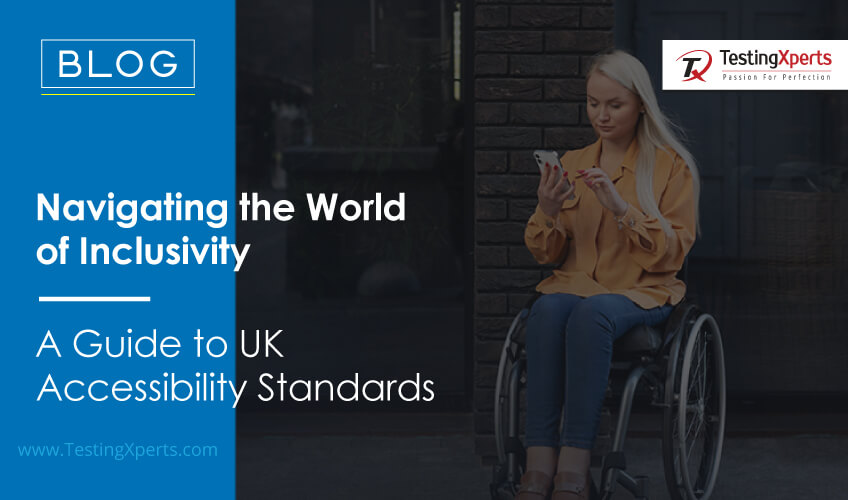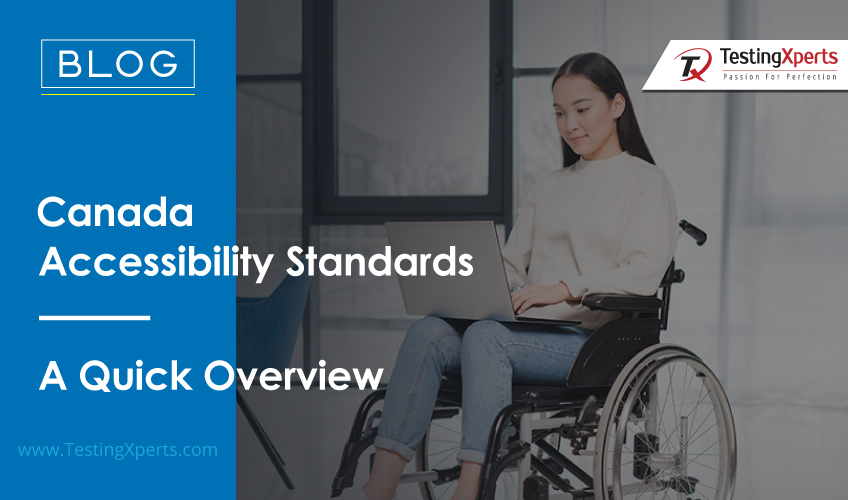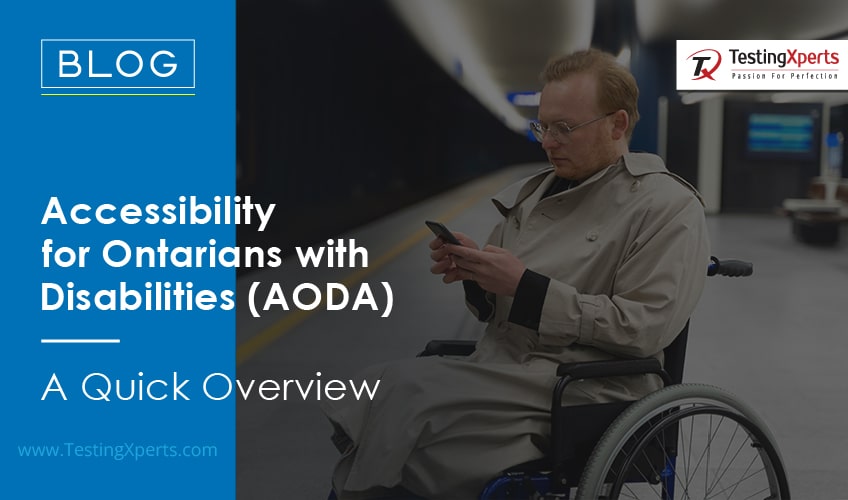- The Current State of Accessibility in Government Websites
- Challenges in Implementing Accessibility Testing
- Why is Accessibility Testing Crucial for Government Websites?
- Resolving Accessibility Challenges
- Strategic Decision-Making for Implementing Accessibility Testing
- Accessibility Testing Tools for the Public Sector
- How TestingXperts Can Help with Accessibility Testing for the Public Sector
- Conclusion
In today’s digitally driven world, everyone should have equal access to online resources, regardless of physical or cognitive abilities. This assertion is not just a principle but a necessity, with over 61 million adults in the United States living with a disability, according to the Centers for Disease Control and Prevention (CDC).
Government websites tasked with providing essential information and services hold a unique responsibility regarding accessibility. According to a report by the American Foundation for the Blind, an estimated 25.5 million Americans are visually impaired. Furthermore, the World Health Organization reports that over 5% of the world’s population has disabling hearing loss. These numbers illustrate the vast audience that relies on accessible digital platforms, especially government websites.
Automated accessibility testing is a specialized area wherein a digital product, such as a website or application, is evaluated for its usability by individuals with a range of disabilities. It includes those with visual, auditory, motor, and cognitive impairments. The aim is to ensure a website is user-friendly, navigable, and accessible.
The Current State of Accessibility in Government Websites
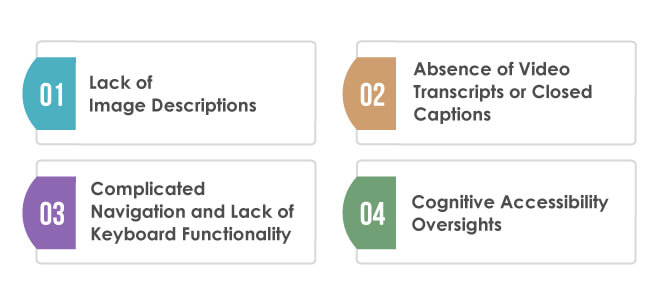
Understanding the current accessibility of government websites is crucial in identifying the challenges and crafting appropriate solutions. There’s a significant gap between websites that are fully accessible to all users, including those with disabilities and those without. As per a WebAIM survey in 2020, 97.4% of homepage scans revealed WCAG 2.0 failures, highlighting the severity of this issue. Following are some of the accessibility challenges that occur on government websites:
Lack of Image Descriptions:
Many websites fail to include alternative text (alt text) for images, which screen readers use to describe images to visually impaired users.
Absence of Video Transcripts or Closed Captions:
Video content often lacks closed captions or transcripts, making it inaccessible to individuals with hearing impairments.
Complicated Navigation and Lack of Keyboard Functionality:
These issues can create barriers for people with motor disabilities who rely on keyboards for web navigation.
Cognitive Accessibility Oversights:
Overly complex language, lack of clear instructions, and distracting elements can make websites challenging for individuals with cognitive impairments.
The Role of Automated Accessibility Testing
Automated tools can detect and address many of these issues, but to ensure comprehensive accessibility, manual testing and expert insights are often required. Accessibility experts can consider the unique ways different individuals interact with digital content and identify potential barriers that automated systems might miss.
Achieving full website accessibility is not just about compliance. It’s an opportunity to reach a wider audience, enhance user experience, and build a positive brand image. By addressing the accessibility gap, government entities can reinforce public trust and demonstrate their commitment to inclusivity.
Challenges in Implementing Accessibility Testing
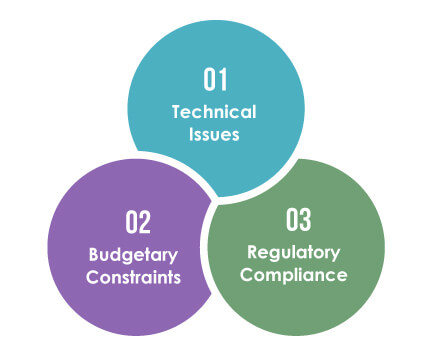
Implementing accessibility testing for government websites is an essential task but is also challenging. To implement effective solutions, it’s crucial first to understand these challenges. Let’s look at some of the most common challenges:
Technical Issues:
Accessibility testing requires specialized knowledge and deep understanding of various disabilities. Recognizing the different ways users interact with digital platforms is crucial. While automated accessibility testing tools can help detect and rectify many accessibility issues, they may not pick up on all potential barriers. For instance, understanding if a website’s color contrast is sufficient for those with color blindness, or assessing if a site’s navigation is intuitive for users with cognitive impairments, often requires manual testing and expert judgment.
Budgetary Constraints:
Implementing comprehensive accessibility testing can be a significant financial undertaking. Budget constraints can limit the amount of testing conducted, potentially leaving some accessibility issues unaddressed. It’s essential to view accessibility testing not as an optional expense but as an integral part of product development. While the upfront costs might seem high, the long-term benefits, such as increased user engagement, reduced legal risks, and improved public reputation, can yield a substantial return on investment.
Regulatory Compliance:
Compliance with laws and regulations such as the Americans with Disabilities Act (ADA), WCAG 2.0 & 2.1, and Section 508 of the Rehabilitation Act can present a challenge. These laws require that all digital content be accessible to people with disabilities. Navigating these requirements and ensuring compliance can be complex, requiring a nuanced understanding of the law and its implications for website design and functionality.
Why is Accessibility Testing Crucial for Government Websites?
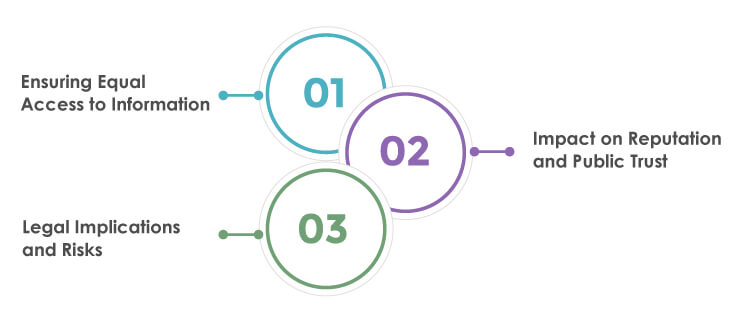
The digital sphere has transformed the way governments interact with their citizens. However, with this advancement comes the responsibility to ensure that all citizens can easily access and use the provided services regardless of their abilities. Here are the reasons why accessibility testing is crucial for government websites:
Ensuring Equal Access to Information:
Government websites are often the primary source of important information and services for citizens. These websites serve many essential purposes, from renewing licenses and paying taxes to accessing healthcare information and voting procedures. Accessibility testing helps ensure that everyone, including those with disabilities, has equal access to this information and these services.
Impact on Reputation and Public Trust:
An accessible website signals that the government is committed to inclusivity and equity, thus strengthening the public’s trust. On the other hand, failing to prioritize accessibility can lead to reputational damage and diminished public confidence. By conducting thorough accessibility testing, governments can demonstrate their commitment to serving all citizens equally.
Legal Implications and Risks:
Non-compliance with accessibility laws such as the ADA and Section 508 can lead to legal consequences. Government entities can face lawsuits, financial penalties, and mandated compliance deadlines if their websites are found to be non-compliant. Thorough website accessibility testing can help identify and rectify potential issues, reducing the risk of legal repercussions.
Resolving Accessibility Challenges

While the challenges of implementing accessibility testing are substantial, they are not difficult to handle. With the right strategies and resources, government entities can create digital environments that are inclusive and accessible to all users. Here are some practical solutions to the challenges:
Leveraging Automation in Accessibility Testing:
Automated accessibility testing tools can quickly scan websites and identify accessibility issues, such as missing alt text, keyboard accessibility, or color contrast deficiencies. These tools can be a cost-effective way to identify and address many common accessibility issues. However, while automation can increase efficiency, it should be complemented with manual testing to capture those nuances that require human judgment.
Training and Awareness for Web Developers and Designers:
Building accessibility into a website starts at the design and development stage. By providing proper training and raising awareness about the importance of accessibility among web developers and designers, organizations can ensure that accessibility considerations are integrated from the beginning, thus reducing the need for extensive modifications later. This proactive approach can also save resources in the long run.
Collaborating with Accessibility Experts:
Accessibility testing is a specialized area that requires deep knowledge about various disabilities and how they affect the way people use digital platforms. Collaborating with accessibility experts can provide the insights and expertise needed to conduct comprehensive testing and make websites accessible. Experts can help interpret and apply accessibility standards, test websites with different assistive technologies, and provide recommendations for improving accessibility.
Strategic Decision-Making for Implementing Accessibility Testing
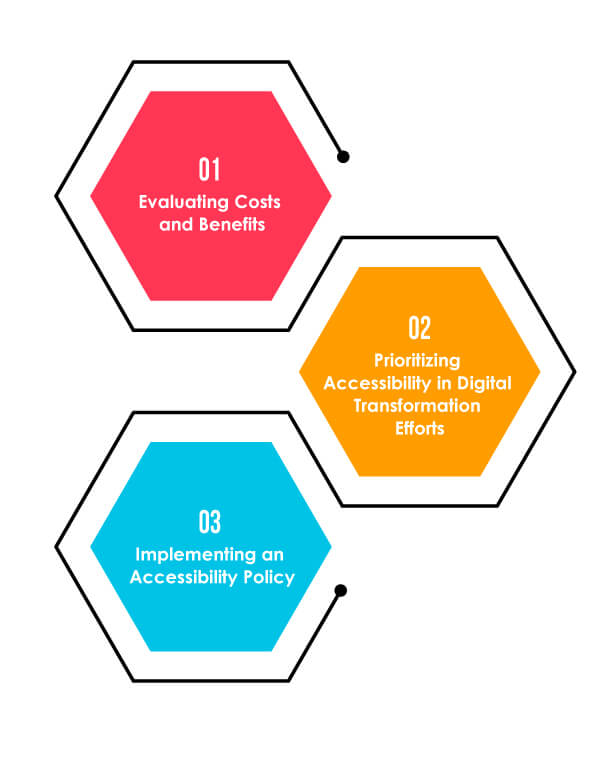
Creating an accessible digital environment requires strategic decision-making at the highest levels. Here are some key considerations to help you make informed decisions about implementing accessibility testing:
Evaluating Costs and Benefits:
It’s crucial to recognize that the costs of accessibility testing are an investment in better service delivery, increased user engagement, reduced legal risk, and improved public reputation. While the upfront costs might be tangible, the long-term benefits can significantly outweigh them. A cost-benefit analysis can provide a clearer picture of the return on investment and help justify the resources allocated to accessibility testing.
Prioritizing Accessibility in Digital Transformation Efforts:
Digital transformation is a priority for many government entities. However, these efforts will not reach their full potential if they do not include all citizens. Making accessibility a central part of your digital transformation strategy can ensure that new technologies and services are inclusive from the outset, thus saving resources on remediation efforts later.
Implementing an Accessibility Policy:
An organization-wide policy can guide efforts towards achieving and maintaining digital accessibility. Such a policy can define the standards to adhere to (e.g., WCAG 2.1), identify responsible parties for implementation and testing, set timelines for achieving goals, and establish procedures for addressing accessibility complaints. This strategic move communicates your organization’s commitment to accessibility both internally and externally.
Accessibility Testing Tools for the Public Sector
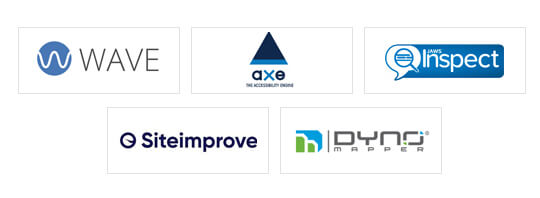
Choosing the right tools can significantly improve the effectiveness of your accessibility testing efforts. Here are some top-rated tools that are particularly suited to the needs of the public sector:
WAVE:
Developed by WebAIM, WAVE is a free, user-friendly tool that evaluates web page accessibility. It provides visual feedback about the accessibility of your web content by injecting icons and indicators directly into your page.
Axe:
Deque’s Axe is an accessibility testing toolkit that comes as a browser extension and provides robust and reliable testing for all types of disabilities. It’s an excellent tool for developers who must test their code during development.
JAWS Inspect:
This tool simplifies accessibility and compatibility testing, rendering an efficient process with output that’s easy to understand by non-technical professionals. JAWS Inspect uses transcripts of JAWS output to help quickly diagnose issues and share them with the broader team.
Siteimprove:
Siteimprove’s platform offers many features, including accessibility testing. It checks your website’s compliance with accessibility standards and provides detailed reports and recommendations.
DYNO Mapper:
This tool not only performs accessibility testing but also generates visual sitemaps. It tests websites for WCAG 2.1 compliance and offers results with solutions that can be categorized by issue, page, or priority.
How TestingXperts Can Help with Accessibility Testing for the Public Sector

Digital accessibility ensures all users can interact with your digital platforms efficiently and effectively. This is where TestingXperts can assist. With years of experience and a commitment to digital inclusivity, Tx provides comprehensive accessibility testing services dedicated to the unique needs and challenges of the public sector.
By partnering with TestingXperts, you gain more than just accessibility testing services. You gain a strategic partner dedicated to promoting digital inclusivity. Our comprehensive testing ensures your digital platforms are accessible, usable, and compliant, thus reducing legal risks and enhancing user satisfaction.
Conclusion
The importance of digital accessibility in government websites is only set to increase. As more services move online and digital transformation accelerates, ensuring that all citizens can access and use these platforms will become essential to public service delivery. Let TestingXperts help you resolve the complexities of accessibility testing and ensure that your digital platforms are accessible to all users. Our expert team, customized approach, and commitment to promoting digital inclusivity can help you make your digital services inclusive and accessible.
Discover more
Get in Touch
Stay Updated
Subscribe for more info


